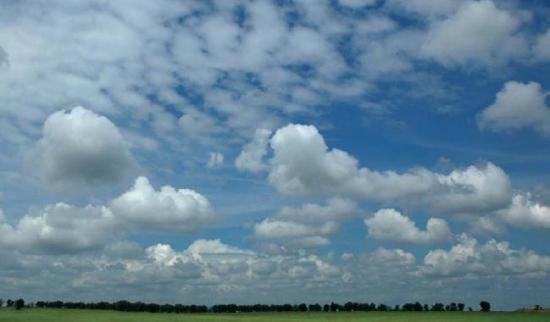So far we have dealt with clouds whose dimensions extended mainly in horizontal extension but this time we address the vertically developing clouds and we are going to start with one of the two genres that can be classified like this, we are talking about the Cumulus.
Cumulus are isolated clouds, generally dense and with well-defined contours, that develop vertically in the form of bumps, domes, or towers, and whose convex tops often resemble a cauliflower. The sunlit parts of these clouds are bright white; its base is dark and horizontal. Sometimes they appear torn by the wind.
They are formed mainly by water droplets or ice crystals in those parts of the cloud that, due to their altitude, are at temperatures below 0º C. They may contain drops of supercooled water. They develop when they occur convective currents caused by the uneven heating of the air over the earth's surface. When ascending, this air condenses into a cloud and will grow depending on the degree of instability of the air that exists at that time.
Fair-weather Cumulus grow in summer from noon to sunset, when they dissipate. If there is a certain degree of instability they can progress to Cumulus congestus and in its case to become Cumulonimbus, with showers and storms. They should not be confused with the Stratocumulus, nor with the Cumulonimbus.
They contrast perfectly with the blue of the sky due to their great density that makes them appear white and bright. For the same reason the bases will appear dark or black. You should use the Polarizing filter for maximum contrast between cloud and sky as well as adjusting focus to bumps.
They differ four species (Cumulus humilis, Cumulus mediocris, Cumulus congestus and Cumulus fractus) and a variety (Cumulus radiatus).
Source - AEMET
More information - The Stratus, The Stratocumulus
